B2B
Intuitive, Inspiring Leaders
11/04/13 09:15

Last week Nelson Mandela was discharged from hospital and relieve seemed to go around the world that he had recovered from pneumonia. Mandela is one of the most inspiring leaders, still at the age of 94 being an example of greatness.
There are not many people as exceptional as he is, yet there are many people with great potential to become and be intuitive and inspiring leaders and there are many people who are already innovative, inspiring and intuitive in their daily life. What do all these people have in common?
They have a vision, they see and they have aspirations. These leaders go unusual ways, they are open to new ideas, they give their teams the freedom to make mistakes and they are learning every day.
When one stops learning, one comes to stand still and stand still means going backwards. But those who want to learn and go forward are the ones that inspire. And this does not only apply to political and business leaders, learning is essential also in photography and not only during photography courses or during the ones booked photo safari. Learning in photography happens every day with seeing what’s around you and capturing moments.
Inspire and be inspired.
Ute Sonnenberg for www.rohoyachui.com
Hands of Tips when Planning a Team Building with Photography
05/04/13 09:58

A team building with photography can take place anywhere, in the office building where you work, in the city where you live or at nature destinations close and far to and from home. Yet there are some things to consider and in order to get the best benefits for your team you should keep in mind the following tips to make the right decisions.
1. Choose a location that allows the team to feel away from work.
2. Make sure the team understands that no photographic skills are needed; only a digital camera or cell phone with camera. No stress!
3. Make sure your team leader understands that it is fun, yet with great team connecting features. Photography is the playful tool to align the team members for the company’s goals.
4. Try not to put too much talking or presentations in the team building. Let the team members enjoy the experience and trust the team building presenter that the goal of the team building will be achieved.
5. Surrender to the process. Photography will do its job and provide what the team needs.
Some of these pointers might be hard to do, especially the surrender point can be tough, the letting go and trusting the process, yet by doing it the benefits will be huge. The choice of location can also be challenging depending on where you are. Not everywhere is easy access to wildlife photo safaris or beautiful nature just on the doorstep. If you can choose nature and if it is a garden or park in your city do it. Nature is always supporting, inspiring and comforting. Make sure no one panics and thinks now has to follow a photography course before joining the event. There is no need to do that. Everybody can press a shutter.
Encouraged? Now explain it to your boss
Ute Sonnenberg for www.rohoyachui.com
How to Learn with Photography in an Innovative Economy
28/03/13 11:37

“The demands of a collaboration-based, talent-hungry, global, wired economy are evolving so quickly that success depends on nothing less than continuous learning. Fall behind and you may find yourself disqualified from the race.
One senior innovation advisor at a major energy company put it this way, “In today’s economy there is no way anybody can be an expert in a substantial part of their total field. The modern ‘renaissance man (or woman)’ is one who understands how to learn.” This is huge and so important.
Companies of all sizes in all industries are trying to meet the new imperative. Learning and Development (L&D) spending was up 12 percent in 2013, the largest jump in almost a decade. The goal is to integrate learning into a company’s culture and processes. There are also training sessions, workshops, conferences, and retreats, but the most successful strategies are those that make learning a continuous process, hardwired into a company’s metabolism.
For leaders this is both a daunting challenge and an exciting opportunity to engage and retain top talent. You have to keep your eye on the horizon, your ear to the ground and your nose in the wind. Your company’s needs are ever-changing, and you must stay one step ahead.” (Meghan M. Biro in The new rules for leadership for Forbes)
How to cope with that? What to do? How to keep learning at a high pace? Not only the learning pace has become challenging also the huge mass of date that needs to be processed is a challenge of its own. Can one do all that through reading, talking, listening? I dare to say no. We learn best through visualizations. When we see “the bigger picture”, we understand, we memorize and we get inspired to develop new things, technologies and products. The high demands of learning in nowadays economy need the matching tools to do so and photography has and will have a key role in this process. Photography makes visible what is non-visible and by doing that, it makes it easy to understand and learn. Leaders need to learn how to communicate with visual tools and not only leaders of marketing teams, who are working already with images for their marketing campaigns, leadership itself will become visual and communicated through images. The learning utilizing photography is an accelerated process. It includes fun, awe, surprise and unconscious learning, which supports and ignites innovation. Photography makes visible what the conscious mind is not able to see yet and allows quantum leaps in learning, understanding and innovating.
And how does it exactly work? First to make clear, no photography skills are needed, no photography course needs to be attended and one does not have to go on trips and photographic safaris to do it, yet this environment does support and accelerate the process. A cell phone camera is enough to start experiencing the strength of photography under the guidance of a qualified trainer, teaching the delegate through assignments to accomplish the desired results.
And now just try it and see yourself.
Ute Sonnenberg for www.rohoyachui.com
How to Accelerate Innovative Leadership with Photography
21/03/13 10:15
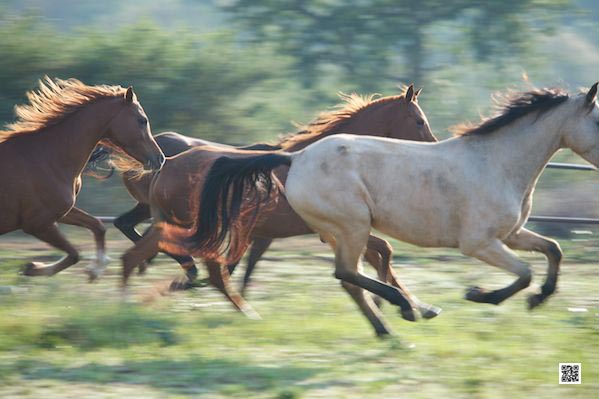
Something is innovative when it is qualitatively new and in order to be an innovative leader, executing innovative leadership an innovative leadership tool is what is needed.
Times are fast, news spreads within seconds all over the world and high quality decisions need to be made quickly, having global impact on the company’s success and the life of people. The high quality demand in combination with time is tricky and asks for a tool that can manage both with the result of innovative decisions. The tool needs to serve innovative leaders and accelerate innovative leadership. This tool is photography.
Photography is easy, quick, reliable, insightful and last but not least also fun. And when there is fun, work and learning just goes easier. Instead of a long and tiring process photography makes it possible to get to the point quickly, unearths insights instantaneously and is incredibly easy to handle. It is applicable to all issues, processes, projects and leadership challenges, team buildings, HR tasks and in house training and coaching. The utilization of photography accelerates problem solving, strategic planning, product development and any other task a company is dealing with every day.
Use it, accelerate innovation and bring some fun into daily work. Well it is not quite a photographic safari experience, but there are pretty sure some Big 5 just around the corner of the office. It is about seeing, innovation is about seeing like Steve Jobs did and photography makes one see.
Happy accelerated seeing with photography!
Ute Sonnenberg for www.rohoyachui.com
When Business Leaders Use Photography
15/03/13 12:28

When business leaders use photography the first that comes to mind might be images of top managers on photo safari wildlife photography courses with big telephoto lenses enjoying their hobby during a holiday in Africa.
But there is more. Innovative business leaders use photography as tool in their daily work. No big zoom lens and heavy camera needed, the cell phone is enough or a nice little pocket camera. The photographs are the helping tool with problem solving, strategic planning, team buildings, leadership training, business coaching and endlessly more.
But how does it work? Pretty simple. Whatever question or task the leader/manager is confronted with and struggling to get hold of its essence and the innovative solution, photography comes in to help seeing. The problem or task gets visualized through photographs and the photographer/leader/manager does not even have to leave the office. Photographing with the right mindset will deliver all answers and unearth hidden from plain view solutions. Now they only need to use the information provided and implement solutions and results.
Sounds too easy? It is easy, yet a training is needed to use this amazing tool photography in that way. And from there you just go.
Imagine how easy things get in the office!
Happy snapping!
Ute Sonnenberg for www.rohoyachui.com
Innovative Brainstorming with Photography
14/03/13 12:34

Brainstorming is often the way we try to find ideas regarding a certain project, a new product or for problem solving. We use it in business, in personal life and for creative processes. And we usually talk a lot while brainstorming, using several techniques to tap into our creativity to come up with innovative ideas. Also images are involved, but the semantic plays a major role.
How about using only images to brainstorm? A team is brainstorming about lets say a business issue and using entirely photography to unearth problem solving ideas and concepts. Each member of the team visualizes an idea through photography and shows the image to the colleagues. All team members look at all images, “digest” what they see and take the ideas further; visualizing what potential they see in them. At the end of the brainstorming session the essence of all ideas is left on the screen in form of one or more images for further use to solve the business issue.
These sessions are very efficient and allow leaders to guide their teams to innovation in an intuitive way. They work also for issues within teams and can be used in team buildings e.g. in combination with photographic safari excursions for one or more days. The environment will contribute to the success. But in essence they work anywhere, in meeting rooms in offices, on planes, at conferences and anywhere else.
Try it and by the way they are fun too.
Ute Sonnenberg for www.rohoyachui.com
How Photography Inspires
07/03/13 14:44
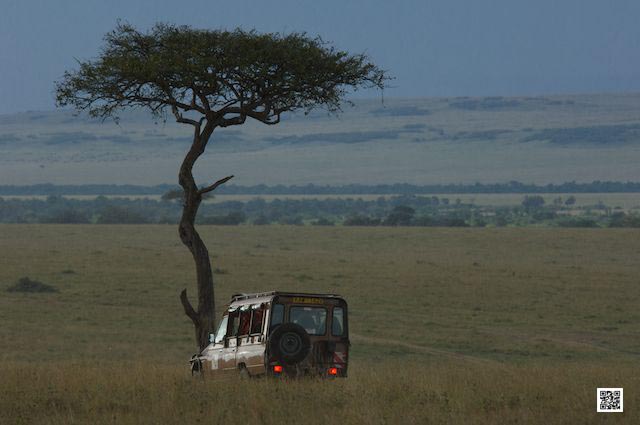
Photography has become a part of our daily life, to capture snap shots of the children and pets, to communicate, archive, explain and inspire.
It inspires not only our private life, but also our work life and it will do even more in the future. Leaders will visualize the future of their company, finding solutions by utilizing photography; teams will become more aligned by joining team buildings with photography; communication will be visual and misunderstandings will be minimized and even success will be visualized with the help of photography.
But there is more. Photography is and will be not only our everyday tool, it also inspires us to learn, grow and invent. It is at the root of innovation and images carry innovative ideas. Photography is fun and adventure and photographic safaris might be the only shooting left in the bush and conservation blooming. It is technology curiosity with constantly new evolving photographic gear and photography courses igniting art and joy.
Photography is inspiration. Let it inspire you!
Ute Sonnenberg for www.rohoyachui.com
How Photogrpahy fixes Things
01/03/13 09:39

Sometimes we enter a room full with people and we feel that there is somehow an undercurrent, something is going on, although everybody seems to enjoy him(her)selve and having fun. This situation occurs also in meetings and work teams, but it is not clear what it is. Something is not right, but one cannot say what it is.
One-on-one conversations are planned to find out what is going on, but they don’t unearth the real reason of the disturbance in the team. The undercurrent develops to be a surface current and irritations pile up. Still words cannot fix it, there is something nobody is talking about or nobody is conscious that it is there. The situation has become very unpleasant. The team can hardly function.
What now? Photography can fix it. What the mind is not able to tell, the unconscious is more than capable to show, because it knows where the problem is and how it can be fixed. Photography becomes the voice of the unconscious. It helps teams to find out what they are struggling with, helps leaders to find the right way in guiding their teams and it is at the end also fun and makes it a very pleasant experience. Team buildings with photography and leadership training with photography are only two ways in helping teams through photography. There are many more.
And what works for work teams works also at home for families, friend groups, dance groups, football teams and wherever people would like to fix unpleasant situations.
Try it. It feels so good when its solved.
Ute Sonnenberg for www.rohoyachui.com
Leadership: How to Produce Ideas utilizing Photography
28/02/13 12:00
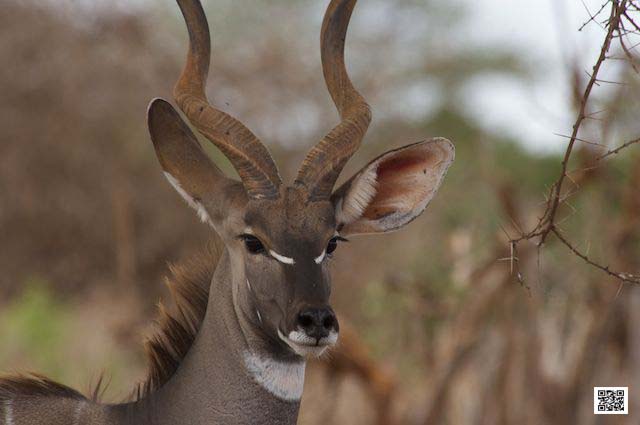
James Webb Young published in 1939 a book with the title “A Technique for Producing Ideas”. He was a cross-disciplinary thinker and his book mentions 5 essential steps how ideas are produced:
All five steps are executed by the brain and at the end an idea rolls out. This process is in its physical being non visible and non physical, because it happens in the maze of our brains. We might visualize material and ideas for ourselves to understand it better, but the images are just in the brain.
That can sometimes be a problem when working in teams to produce ideas. Words cannot explain what the processes in your brain are doing and what you see, and this is the same for every member of the team. Irritation, frustration and misunderstanding are starting to undermine the process and its getting more difficult to come up with the right ideas.
This can be changed. Photography is the all-in-one device for producing ideas. Material is captured in images and by capturing it, it is at the same time digested and already processed by the unconscious. Now all images hang on a wall or are lying on a table. After looking at them for a while the people take pictures of the pictures. One or several of them are the a-ha moment and the moment that the idea meets reality at the same time. An idea was born.
Photography cuts down the process to its essence. By doing that it saves a lot of time and energy, gives leaders quick access to solutions and teams more resources to work with. It works in all sorts of settings like marketing sessions, leadership training, innovation sessions, product development and actually anything one is looking for ideas, also little (or not so little) hassles like how should I present myself in the job interview tomorrow.
Got it? Try it. Enjoy!
Ute Sonnenberg for www.rohoyachui.com
Read more about Webb’s book here.
How Management Teams can Benefit from Photography
22/02/13 12:54

Communication can be a challenge even when all speak the same language, work in the same team and on the same project. Misunderstandings occur constantly, because words are the poorest kind of communication. Body language is telling already more than words, but how to communicate business information through body language? Pretty much impossible, but probably looking quite intriguing when watching people trying it. What else can be used? Well images, visualizations and photographs are an amazing tool to communicate without misunderstandings.
It works for families and it works for management teams. The wife is looking for a new kitchen. She goes to different stores and from the kitchens she likes she takes a photo with her smart phone. At home she shows it to her husband and together they make a choice which what kitchen to proceed. It would have been impossible for her to explain her husband with words how the kitchens look like. He would have created images in his mind not matching the actual kitchen, but with the images it was clear immediately.
The same process works for business teams even if the subject is a situation within a team. Everything can be visualized and captured in photographs. Teams start understanding each other and misunderstandings become rare. Energy and time is saved, no endless and tiring discussions with no result, time is used efficiently and clear results offer solutions not more problems.
Photography for business is a strong tool and it is the future.
The future is now.
Ute Sonnenberg for www.rohoyachui.com
How Photography will be the Innovation Tool of the Future
14/02/13 09:29
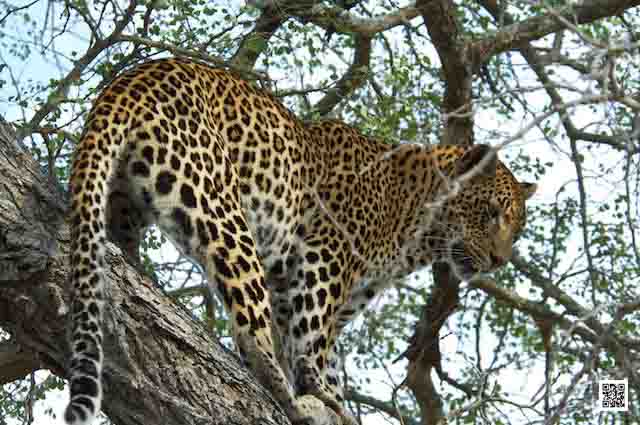
At the time that quantum physics was evolving and the scientists were wondering what the discoveries they made would mean for humanity, one of them, David Bohm, started collaborating with Martin Buber, the Austrian philosopher. Bohm wanted to find answers in philosophy how discoveries like “everything is made of the same energy” and “everything is connected to everything else” explain the universe and our role in it. He worked with Buber on his book “I and Thou”, yet he realized that he didn’t find all answers he was looking for. David Bohm concluded that it needs the arts to find comprehensive answers, that it would need the triangle quantum physics, philosophy and art to answer the questions of the universe.
The answers he was looking for might be on their way. Back in his time art was something few people did; nowadays art is something billions do. With a camera in every cell phone pretty much everyone is doing art through photography. It doesn’t need any photography course to wield this amazing tool, one only needs to press the shutter and it goes. By having a broad majority of people doing it, photography has become the connecting art, producing images and answers continuously.
Now, one only needs to learn to read the images to find the answers, connecting quantum physics, philosophy and art in an innovative synergy to conquer the challenges of leadership and life. Visualizing quantum physics and philosophy is innovation at its best, unique, powerful and ready to serve humanity. Next to numerous possible scientific and everyday life applications, photography becomes the key to continuous success in business.
Photography is what David Bohm was looking for. His intuition was right, that the arts were the link.
Ute Sonnenberg for www.rohoyachui.com
How Photography can Help Teams
01/02/13 08:51
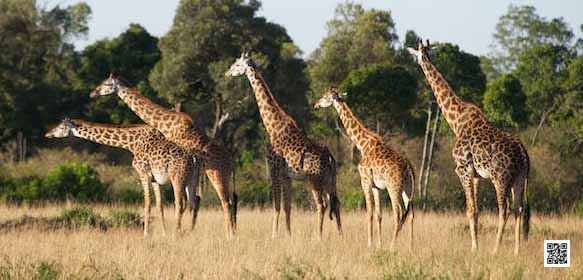
Working in teams is a great thing, yet it comes with challenges too. Different personalities, different backgrounds, different ideas, different ways to work and all working for the same goal, friction must be unavoidable.
Friction has a stimulating aspect, but mostly it means loss of energy resulting in inefficiency and unhappiness of the team members. Such a process can develop unnoticed for quite a while and when it actually comes to surface it can be a difficult task to identify the core of the problem and to solve it, because emotions might be high up already and blur the view.
In these situations photography can be a very useful and insightful tool. It can be part of team building sessions, business coaching or leadership training. Using photography brings play into the situation, fun and joy. And it visualizes the issues the team wants to address. What no one can say an image can show. The intuition (or the unconscious) speaks and what emotions blurred, the eye now can see.
If the team chooses to do sessions in a nature environment like e.g. as part of a photographic safari or embedded in a wildlife photography course, nature will be a stimulating environment to open up and enjoy the process, away from the usual environment with all the good nature has to offer. Yet, the key to seeing is the photography, no matter in what environment. Photography is the pleasant that allows easy access to instant insights.
Try it.
Ute Sonnenberg for www.rohoyachui.com
Photography & Business: The Unconscious has the Lead
29/01/13 10:28

Have you ever had a conversation with your gut feeling? Did you listen? What did happen then? Where you one of those who said, I knew this would happen, but didn’t do anything beforehand with this knowledge?
If your answer is yes, you are one of those who know and don’t do anything with it beforehand, be assured you are not alone. There are whole industries built on doubting the gut feeling or better the not listening to intuition. For example market research. Endless tests with focus groups to find out what new products customers want. But how can customers know they want the new product when the product does not even exist as an idea? Steve Jobs did the only right thing. He made the iPod without any market research, just by following his intuition and no doubt, it was a success. Now, one might think, but there are not so many Steve Jobs. Yes there are, they only need to be encouraged and trained to discover and utilize their intuition, because we all got intuition.
Nobody seems to find it weird to act intuitive in photography, choosing the right photography course and the right photo safari by following their feeling, knowing intuitively what is the right course to do and the right destination to visit. Photography is constantly working with intuition, having the finger on the camera’s shutter to press it when the moment to capture occurs. And the results are photos we love.
In other words creative people like photographers run on intuition, now this ability only needs to be applied to business and science, although scientists are very conscious about the role of intuition as Freud and Einstein say themselves:
Sigmund Freud: “Everywhere I go I find a poet has been there before me. Poets are masters of us ordinary men, in knowledge of the mind, because they drink at streams which we have not yet made accessible to science.”
Albert Einstein: “The intuitive mind is a sacred gift and the rational mind is a faithful servant. We have created a society that honors the servant and has forgotten the gift.”
So, lets focus on intuition and the knowledge of the unconscious, visualize it through photography and for whatever answers you were looking for in your business, you will unearth them with a click on the shutter.
Tap into your intuition consciously and access immense resources of knowledge.
Ute Sonnenberg for www.rohoyachui.com
Photography for Business - How to get Started
08/12/12 16:27
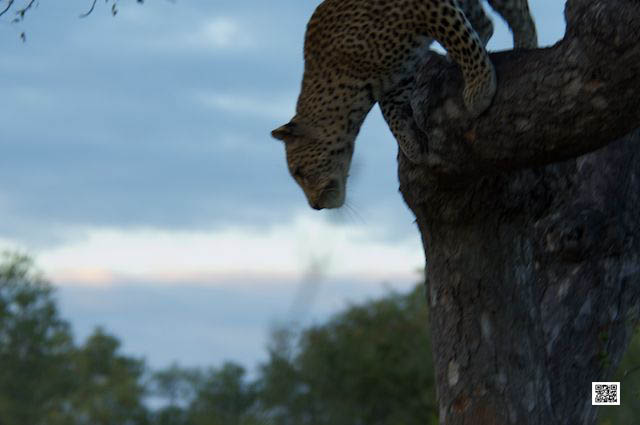
Photography is probably the most interesting tool for businesses to accelerate innovation and growth. But how to start and what does it need to use it?
Not much.
a camera, a cell phone camera is just fine
something to upload the images to like an iPad or a laptop
a training to learn how to read the images
Not needed are:
technical photographic knowledge
experience in photography
expensive equipment
What are the benefits?
Easy and instant access to insights and knowledge
Accelerates innovation and learning process
Allows access to until then untapped sources of information
And not to forget, it is playful and fun using it.
Let innovation begin now.
Ute Sonnenberg for www.rohoyachui.com
How Photography can Accelerate Innovation
29/11/12 16:30

Many things were said about Steve Jobs and probably the most significant was that “he saw things”. He had the ability to see what can be done and what people would love to have and use. He saw innovation.
Not many people are as gifted as Steve Jobs, yet there are many people working on innovation and developing fascinating new things without probably having the ability to “see” like Steve Jobs did. It might be a disadvantage not to see the innovation, because we understand much easier where we are going and for what we are going when we see the goal, visualize the goal.
That’s the moment when photography comes in. Now you might think how can one photograph something that doesn’t exist yet, an innovation, an idea. Well it is possible to visualize ideas through photography and even the way to achieve the goal can be photographed. One simply got to learn how to read the images.
It’s probably the way Steve Jobs saw “it”. He saw devises, software, nature, people, actually all around us and he had the ability to see beyond it and visualize the innovation. We see also all what is surrounding us, yet we might need a little help from photography to see beyond it and to learn how to use the information we gather that way.
No worries, it is easier done than to talk about it. Like with anything else, pictures are saying more than words and training is available to learn how to utilize photography for innovation. Ask for them, if you are interested.
Keep your vision inspiring your everyday doing and innovation will come.
Ute Sonnenberg for www.rohoyachui.com
How Photography Accelerates Business
02/11/12 13:00

Imagine a normal day at the office. Hundreds of emails, meetings, phone calls and deadlines. Studies showed that in the age before emails one could work undisturbed for about 23 minutes, and now? All happens fast, yet time consuming and decision delaying. It’s a miracle that any business is done despite all constant disturbances. Then take even a big organization. There are examples that Microsoft needed longer to put together the team for a certain project than to build the building where the project team was supposed to be located. This is just killing for productivity and growth.
Businesses need to be agile and innovative. That requires short chains of decision and instant access to information. The digital world allows instant access to information, yet an even faster and more efficient tool is still not used, photography. All information at hand any time and anywhere and not Internet needed. This is what photography can offer businesses. It is THE innovative tool of the future and companies who learn to use it will be ahead of anybody else. No matter what field of business and what internal department, photography is the instant insight information based decision tool for managers and industry leaders. With a click on the shutter it reveals all needed information and shows at the same time the solution. It can’t be easier than that. Use it!
Ute Sonnenberg for www.rohoyachui.com
Photography for Business: One-Day Acceleration Sessions
19/10/12 19:29
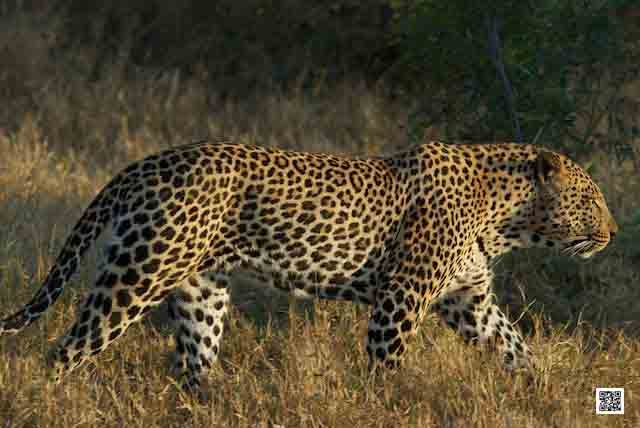
Kimberly-Clark is doing collaborative innovation sessions for specific problems and opportunities. They recruit outside “mentors” that come in for a day to help solving specific problems and to explore opportunities the company is looking at. The outside-in view of the mentors allows a deep dive into the issues with strategic and practical insights as the result, that otherwise would have taken weeks to gather.
Now imagine you add photography as an accelerator to this process and you get One-Day Acceleration Sessions for various business purposes. From innovative leadership sessions to brand innovation, product development and all in between, acceleration sessions with photography are the insular-mind-blowing incubator that saves time, money and resources.
And how is this possible? It is common knowledge that our conscious is only the tip of the iceberg sticking out of the water and our subconscious is the huge rest of the iceberg under water. Our subconscious knows much more than our conscious, we just struggle to get access to its enormous source of information, at least we did. Photography is the key to open this immense resource to us and allows us to benefit from it. By adding photography to for example leadership sessions it allows us access to these resources of knowledge, speeds up the process and lets us gain insights and ideas we otherwise would need months or even years.
All Innovation and knowledge is in us. Photography makes it visible, physical and ready to use. A click on the shutter is the key to innovation, leadership and success. It’s as simple as that.
Photography, the business tool of the future and the future has started now.
Ute Sonnenberg for www.rohoyachui.com
On Team Building: The Cheetah Lesson
13/10/12 11:58

We were on a team building session on Phinda Private Game Reserve in KZN, South Africa, when two cheetah brothers decided to teach us all about teamwork.
It often happens that guests have their designated animals for their stay at a certain game reserve. They will see the same leopard or pride of lion during their entire stay in different situations, witnessing the most beautiful wildlife interactions and bonding with these amazing animals. It is, as if nature assigned them for the best experience.
The two cheetah brothers seemed to be assigned to us and they spoilt us. During the four game drives we had on Phinda, they showed us how a perfect team works. When one brother was resting, the other one was scanning the area. When they were scanning the area together, each of them had his own section he was responsible for. During all their activities they gave each other reassurance and backup. One could see that each of them felt safe in their relationship and the roles were clear. They understood each other even without a look or a sign; they were just connected.
The highlight of the cheetah teamwork was the hunt and if we had not realized until then, now it was very clear they were our designated animals. We were the only vehicles around and following the brothers. They were mobile and intensively scanning the area for potential food. The grass was very high, but the brothers could still see very well. Suddenly they moved faster, the hunt had begun, each of them in a split of a second doing what he was supposed to do. There was a buck in front of us. One brother approached it from the right and chased it towards the other brother waiting on the left. Then the brother on the left took over, made the final sprint and killed the buck. They took a couple of deep breaths and one brother started feeding while the other brother scanned the area for possible other predators and therefore potential danger to their prey. After a while they changed. Now the other brother was feeding on the kill and his brother was on the watch.
We were sitting there speechless, astonished how the two cheetahs showed us exactly what we wanted to accomplish with the team building session in the bush. Teamwork at it’s best.
Ute Sonnenberg for www.rohoyachui.com
Seeing Your Workplace through Photography
27/09/12 09:35

We all might have experienced days that we hated going to work, hated the office, the colleagues and anything else that comes with it. Mostly ideas of quitting and going away to better places are coming up; a feeling of wanting to run away becomes very strong. But often this fades away and we stay where we are with a bit of a bitter aftertaste and an uncomfortable feeling about ourselves. This is not necessary. There might have been something that had bothered us and we couldn’t figure out what it was. It might have not even been work related after all; just nagging us and we thought it was work. So going away wouldn’t have made any sense.
Nonetheless these “moments” can be experienced as very unpleasant and disturbing, especially when you can’t find out what it is. In this case think of photography and use it to help you. You will most likely have a camera in your cell phone and the phone will be with you at work. Take photos during your workday and do it without thinking too much, just shoot away. Don’t look at them while you are still at work. Go home, upload the images onto your computer and have a look at them. Maybe even wait until after dinner and then start seeing your workplace with the distance, yet connection a photographer has. You might see things you have never noticed that they are there or you will see your coworkers with different eyes or you will wonder why your desk is such a mess. With this distant view you will go back to work the next morning and it will be different. You might change how you do things, you might talk to your colleagues or you might realize how much you like your work. Whatever it is, the images will have helped you seeing and the unpleasant feeling might have disappeared.
Try it.
Ute Sonnenberg for www.rohoyachui.com
Visualization: Businesses utilizing Photography for Communication
12/09/12 08:55

How often does it happen that we talk to somebody and can’t get our message through to be understood? How often are we saying something and the person who listens hears something completely different? You might know the old game of whispering something in somebody’s ear and this person whispers it into the next person’s ear and at the end of the chain of people the message isn’t at all what it was in the beginning. Talking is such a poor communication tool
Poor communication can lead to difficult situations in personal life and in business. Especially in business with work teams of completely different personalities and backgrounds, communication can be a real challenge. It starts already with getting to know each other. How would it be, if we just could let images speak for us and tell our colleagues who we are and what we need to be happy at our work place? Photography visualizes what we try to tell and everyone can understand it. Even uneasy situations of “how to tell my colleague that I need some silent moments to focus on my work” can be visualized and will not be experienced offensive by others.
Photography is the easy access key to visualization of about everything for easy and clear communication in business and at home.
Try it
Ute Sonnenberg for www.rohoyachui.com
How Photography Identifies Talent in Work Teams
07/09/12 09:06

Talents in companies are in human resources language called high potentials. The companies do a lot of work in identifying and supporting their high potential employees in order to secure the company’s future and to continue success. This process is complex and often not easy. Who is the right person for what is the major question. There are several personality tests, role plays, analysis and assessments, but still about 30-40% of the choices turn out to be the wrong choices. Next to unforeseen life events as a reason for dropouts, people are able to pretend to be the right one despite all the tests. There are books that analyze personality tests and assessments, and the tested persons can learn in advance what the expected answers are for a certain position in a company and just fill it in. So, how can one get to the essence, to the real potential in relation to a certain company position? The answer is photography. Photography always shows also the photographer and the photographer’s potential in relation to a defined purpose. Photography is a very powerful tool in the process of identifying high potentials. It needs to be wielded with care and knowledge. And it can make the life of human resources a lot easier.
Ute Sonnenberg for www.rohoyachui.com
How to Utilize Photogrpahy in Team Building
31/08/12 11:30

Many companies organize team buildings to create opportunities for their teams of employees to bond in an informal environment away from their usual workspace. To enhance the informal character mostly some kind of activity is chosen that allows interaction like carting, rafting, other sport activities or special experiences like a balloon ride. People usually love it. It gives the opportunity to interact in a different way with your colleagues and to get to understand each other better.
How would it be to add photography to team buildings and what would be the benefits? Nowadays with the smart phones and tablets, photos are taken all the time and also during team buildings, but mostly like on a holiday as memories. But photography can offer more and add extra benefits to the team building.
Photography can become the bonding tool of the team building and the anchor of the achieved result at the end. By making photography part of the activity through assignments involving the sport, the experience or even wildlife it adds extra stimulation, motivation, fun and understanding of each other. And at the end it can be utilized to anchor the groups experience through images that reflect the purpose of the team building.
Photography can be a vital source of fun, insight, stimulation and motivation for something important as a team building. With the side effect that its results last forever. … and its easy too!
Tell your boss!
Ute Sonnenberg for www.rohoyachui.com